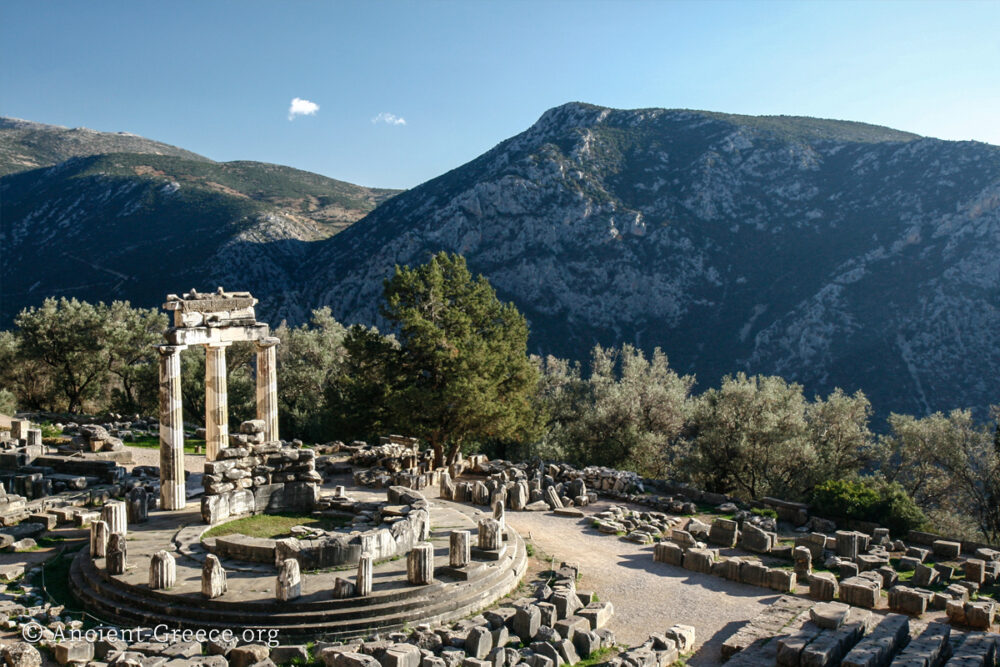
On this page:
Central among the number of imposing ruins that are interspersed on the southern slopes of Parnassos mountain is the temple of Apollo in Delphi. It is an imposing temple of the Doric order whose existence was woven through the turbulent history of the site, and underwent three incarnations before it settled to the ruinous state we find it today, which dates back to the 4th c. BCE.
The temple of Apollo was first built around the 7th c. BCE by the two legendary architects Trophonios and Agamedes. It was burned down in a 548 BCE fire, and rebuilt again between 510 – 505 BCE. This one was named the “Temple of Alcmeonidae” in tribute to the noble Athenian family that oversaw its construction with funds from all over Greece and foreign emperors. It was also of the Doric order and had 6 columns at the front, and 15 columns at the flanks.
This temple was destroyed in 373 BCE by an earthquake and was rebuilt for the third time in 330 BCE Spintharos, Xenodoros, and Agathon, architects from Corinth. The sculptures that adorned its pediment were the creation of Athenian sculptors Praxias and Androsthenes. It was built to similar proportions and size as the Alcmeonidae version of the temple, with a peristasis of 6 and 15 columns along the short and long edges respectively.
The temple’s foundations survive today along with several Doric columns made of porous stone and limestone which is fairly soft material, and have allowed for the temple’s advanced decaying.
The little information we have about the temple’s interior in ancient times survived through ancient chronicles. The precepts of the Seven Sages were engraved on the walls of the pronaos (“Know Thyself”, and “Nothing in Excess”) alongside a bronze statue of Homer with an inscription of the oracle he had received.
The nave might have been divided into a front area which housed an altar to Poseidon, various statues (Moirae, Zeus Moiragetas, Apollo Moiragetas), and other sacred objects such as the iron throne upon which Pindar sat and sang hymns to Apollo during his visit. The second nave contained a gold statue of Apollo. Very few people were allowed to enter this sacred space.
Scant ancient descriptions indicate also that an underground chamber was the location of the Kassiotis spring (the earth fissure where ethylene gasses emanated from), Pythia’s oracular tripod, and the omphalos. Only Pythia was allowed to enter this space in order to deliver her oracles.
Photo Gallery











Various views of the temple of Apollo at Delphi as it appears today and several reconstructions and plans that show how it would have appeared in ancient times.
Pediment Art



The Apollo temple pediment was adorned with a variety of statues, most of which have been lost or survived badly damaged. The statues are on display at the Delphi Museum.
Top left: The east facade of the “Alcmeonidae” temple. The pediment was made by the Athenian sculptors Praxias and Androsthenes. The sculptures represent the god’s arrival at Delphi.
Bottom left: Surviving sculptures from the west pediment depict Dionysus between Maenads (Thyiads).
Right: Winged Nike from the Temple of Apollo acroterium. 510 BCE.
Related Pages




